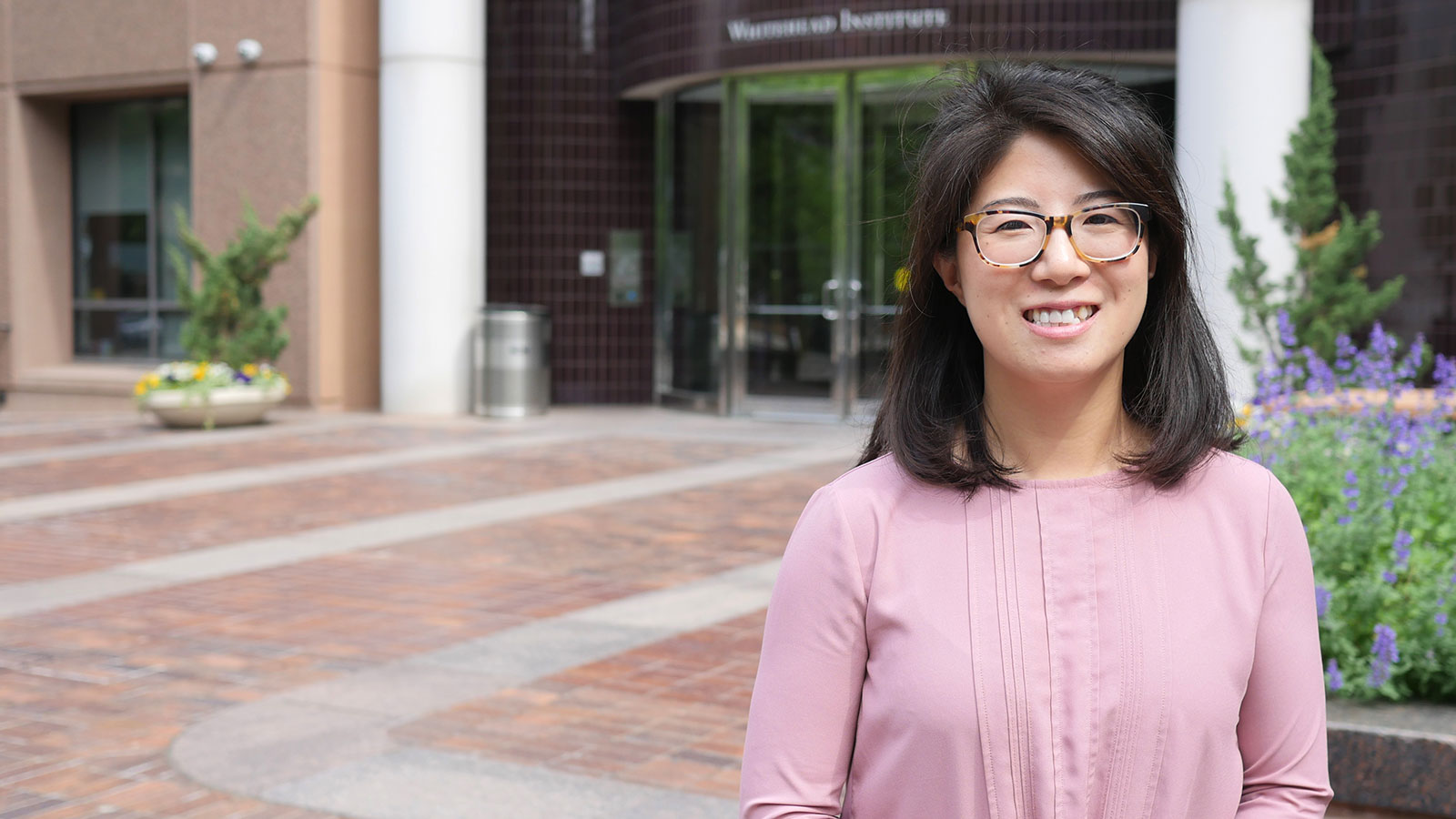Education
- PhD, 2012, Chemical Biology, Harvard University
- BS, 2006, Life Sciences, Peking University
Research Summary
We are curious about how circuits of interacting genes in individual cells enable multicellular functions, such as self-organizing into structured tissues. To address this question, we analyze genetic circuits in natural systems, combining quantitative measurements and mathematical modeling. In parallel, we test the sufficiency of the circuits and understand their design principles by multi-scale reconstitution, from genes to circuits to multicellular behavior, using synthetic biology and bioengineering tools. Together, we aim to provide both a quantitative understanding of embryonic development and new ways to engineer tissues.Awards
- New Innovator Award, National Institutes of Health Common Fund’s High-Risk, High-Reward Research Program, 2021
- R.R. Bensley Award in Cell Biology, American Association for Anatomy, 2021
- Santa Cruz Developmental Biology Young Investigator Award, 2016
- NIH Pathway to Independence Award K99/R00 (NICHD), 2016
- American Cancer Society Postdoctoral Fellowship, 2015
Recent Publications
- Diffusion barriers imposed by tissue topology shape Hedgehog morphogen gradients. Schlissel, G, Meziane, M, Narducci, D, Hansen, AS, Li, P. 2024. Proc Natl Acad Sci U S A 121, e2400677121.
doi: 10.1073/pnas.2400677121PMID:39190357 - Lhx2 is a progenitor-intrinsic modulator of Sonic Hedgehog signaling during early retinal neurogenesis. Li, X, Gordon, PJ, Gaynes, JA, Fuller, AW, Ringuette, R, Santiago, CP, Wallace, V, Blackshaw, S, Li, P, Levine, EM et al.. 2022. Elife 11, .
doi: 10.7554/eLife.78342PMID:36459481 - Reconstitution of Morphogen Signaling Gradients in Cultured Cells. Kim, JS, Pineda, M, Li, P. 2021. Methods Mol Biol 2258, 43-56.
doi: 10.1007/978-1-0716-1174-6_4PMID:33340353 - Synthetic Developmental Biology: Understanding Through Reconstitution. Schlissel, G, Li, P. 2020. Annu Rev Cell Dev Biol 36, 339-357.
doi: 10.1146/annurev-cellbio-020620-090650PMID:33021822 - Communication codes in developmental signaling pathways. Li, P, Elowitz, MB. 2019. Development 146, .
doi: 10.1242/dev.170977PMID:31249008 - Specific oxylipins enhance vertebrate hematopoiesis via the receptor GPR132. Lahvic, JL, Ammerman, M, Li, P, Blair, MC, Stillman, ER, Fast, EM, Robertson, AL, Christodoulou, C, Perlin, JR, Yang, S et al.. 2018. Proc Natl Acad Sci U S A 115, 9252-9257.
doi: 10.1073/pnas.1806077115PMID:30139917 - Morphogen gradient reconstitution reveals Hedgehog pathway design principles. Li, P, Markson, JS, Wang, S, Chen, S, Vachharajani, V, Elowitz, MB. 2018. Science 360, 543-548.
doi: 10.1126/science.aao0645PMID:29622726 - Epoxyeicosatrienoic acids enhance embryonic haematopoiesis and adult marrow engraftment. Li, P, Lahvic, JL, Binder, V, Pugach, EK, Riley, EB, Tamplin, OJ, Panigrahy, D, Bowman, TV, Barrett, FG, Heffner, GC et al.. 2015. Nature 523, 468-71.
doi: 10.1038/nature14569PMID:26201599 - Hematopoietic stem cell arrival triggers dynamic remodeling of the perivascular niche. Tamplin, OJ, Durand, EM, Carr, LA, Childs, SJ, Hagedorn, EJ, Li, P, Yzaguirre, AD, Speck, NA, Zon, LI. 2015. Cell 160, 241-52.
doi: 10.1016/j.cell.2014.12.032PMID:25594182 - Small molecule screening in zebrafish: swimming in potential drug therapies. Tamplin, OJ, White, RM, Jing, L, Kaufman, CK, Lacadie, SA, Li, P, Taylor, AM, Zon, LI. 2012. Wiley Interdiscip Rev Dev Biol 1, 459-68.
doi: 10.1002/wdev.37PMID:23801494

